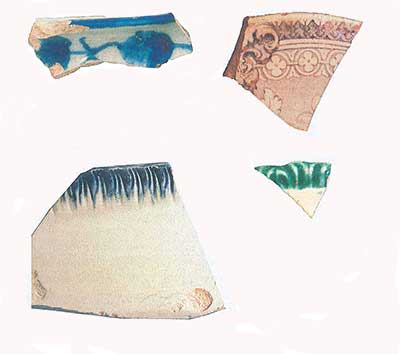The family residence at the McConnell's Homestead site was a stone house made of roughly dressed dry-laid limestone rock. It had two main sections.
The north half was a discontinuous limestone foundation that measured 42 by 18 feet. It contained a hearth and chimney foundation.
The south half had a stone-walled cellar that measured 36 by 24 feet and a hearth surrounded by a brick floor. A cellar also was along the eastern wall. Archaeologists recovered large amounts of animal bones and ceramics from this cellar. Also of note was a triangular fireplace, which is a traditional Pennsylvania Dutch feature. This shape allowed one chimney to service two ground-floor rooms and usually a second-story room as well.
The McConnell and Ardery farming operations generated enough disposable income that the families could buy fancy tablewares made by English and East Coast potters. In fact, the large amounts of decorated pearlware and whiteware ceramics recovered during the archaeological investigations - serving vessels in particular - reflected the McConnell and Ardery families' wealth and prestige. This show of wealth was particularly relevant during social calls with peers, which frequently involved offering tea and coffee, along with food.
The prominent and highly visible stone house was constructed by the McConnell and Ardery families. The house was built along one of the more important transportation routes through central Kentucky at that time. The house may be another example of the families' desire to present their success to others - in this case, through architecture.
